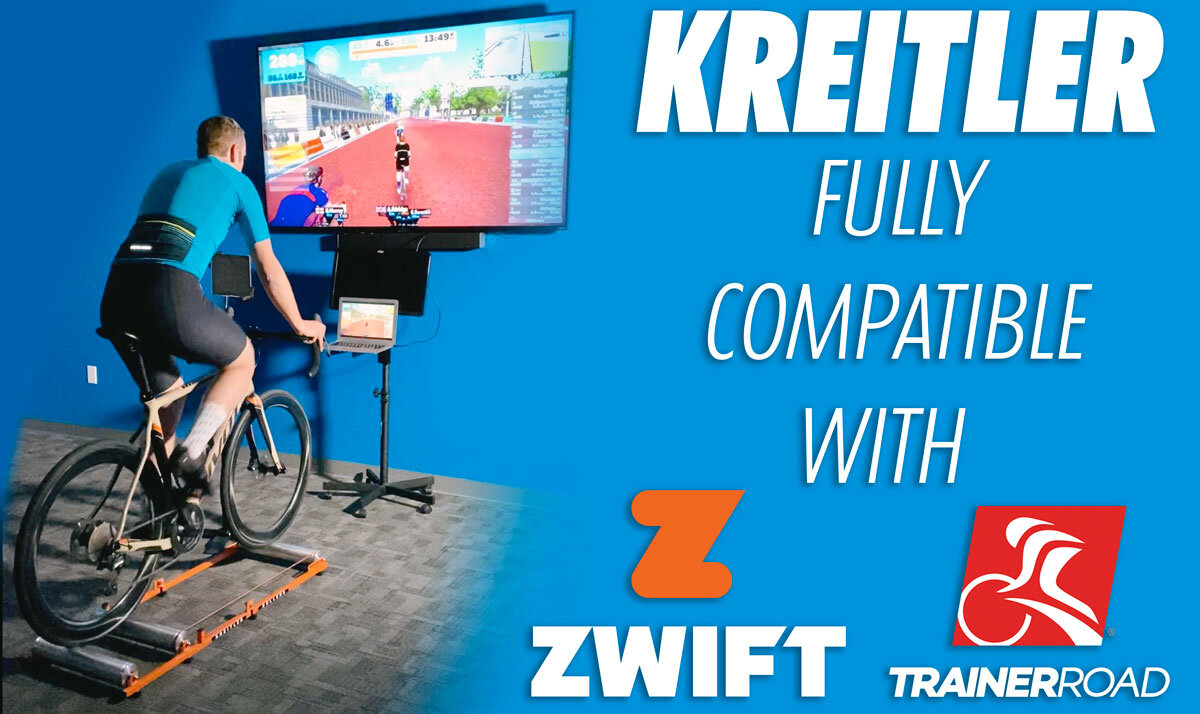Using Kreitler Rollers with Training Apps
Kreitler Rollers are fully compatible with popular training apps, including Zwift and TrainerRoad. These programs are great way to keep yourself entertained and challenged while training on your rollers. You don’t need to invest in a smart trainer; it’s easy to use the apps with your rollers.
Here’s how:
1) Get a power meter if you don’t already have one. Make sure to buy one that connects via ANT+ or Bluetooth. There are many on the market. We recommend a fellow Colorado company, Stages Cycling. The 4iii Precision is also a good lower-cost option.
2) Most up-to-date computers and smartphones have Bluetooth built-in, so if your power meter uses Bluetooth, the rest of setup is simply connecting it (and other devices like HR monitors) in the software. If you want to connect using ANT+, you’ll need what’s called a USB ANT+ “dongle.” Be aware, these are no longer supported by the latest Apple iPhones and iPads that use the Lightning charging interface. We’ve personally used this inexpensive ANT+ dongle and verified it works.
It’s that simple!
Kreitler Training Center
Kick off your training with complimentary roller sessions from cycling coach Peter Georgi of Soulor Cycles.
Peter is a lifelong cyclist, a GB rider in his youth and, more recently, a multiple national masters and European scratch race champion. He has a wealth of racing experience on the track, in time trials, and on the road in multi-stage races. Peter owns Soulor Cycles; the Kreitler Rollers dealer for the UK and Europe.
TRAINING SESSIONS INCLUDE:
Ramped Cadence Session- Developing cadence skills is one of the key benefits of using rollers and is a great way to develop efficiency as a bike rider. This session will help you become comfortable at higher cadences and is good for supporting road, track and cross riding.
Roller Endurance Session- This session is great for developing endurance throughout the winter months. The idea is quite simple, a continuous block of endurance Z2 riding alternating with Tempo (Z3) or Sweet Spot. The aim is to keep the effort consistent and build up Time In Zone (TIZ) in the different power zones.
Sweet Spot Rev Ups- Sweet Spot training is universally agreed to be a key part of building FTP levels as well as the ability to ride at high power outputs for sustained periods of time. This session is great to use when trying to lift your FTP as it builds Time in Zone (TIZ) at just below threshold. The Rev Ups also build your ability to cope with changes in pace and also to carry on riding at a high level after an intense effort.
Pedal Technique and Skills Session- As well as hard training, rollers are a great way to help improve your riding skills. This session develops pedal technique and body control. It can also be used as a recovery ride.
Muscle Tension Intervals- Muscle Tension work can be thought of as strength training on a bike. The idea is to use a big gear or force, with low cadence to put the legs under “tension” while cycling. Muscle Tension work is often used at the start of building up for the new season where building strength is a key focus.
Max Power - High Cadence Intervals- These are probably the hardest intervals you can do on the rollers. The idea is to produce the maximum power you can possibly do for the interval while maintaining a high cadence of 115 rpm. As well as being a great way to improve your ability to ride at high intensities for extended durations, they also help develop psychological toughness. These intervals hurt.
SIGN UP HERE TO SUBSCRIBE TO KREITLER’S EMAILS AND RECEIVE YOUR FREE ROLLER TRAINING SESSIONS


